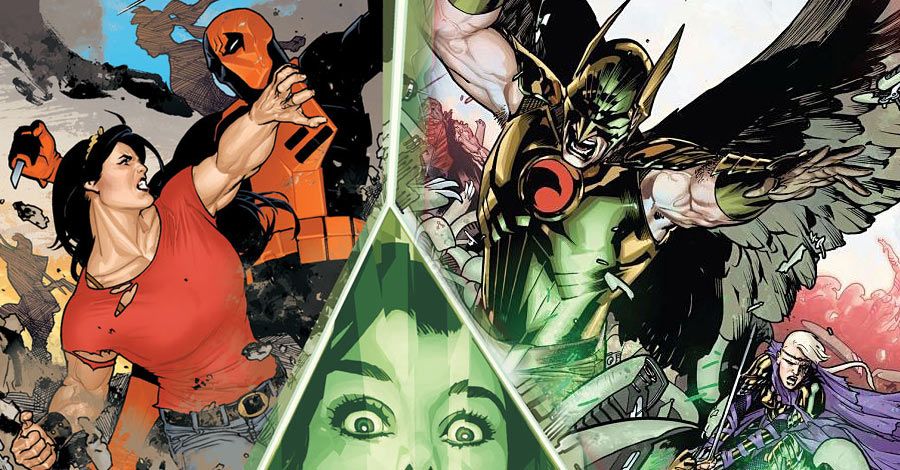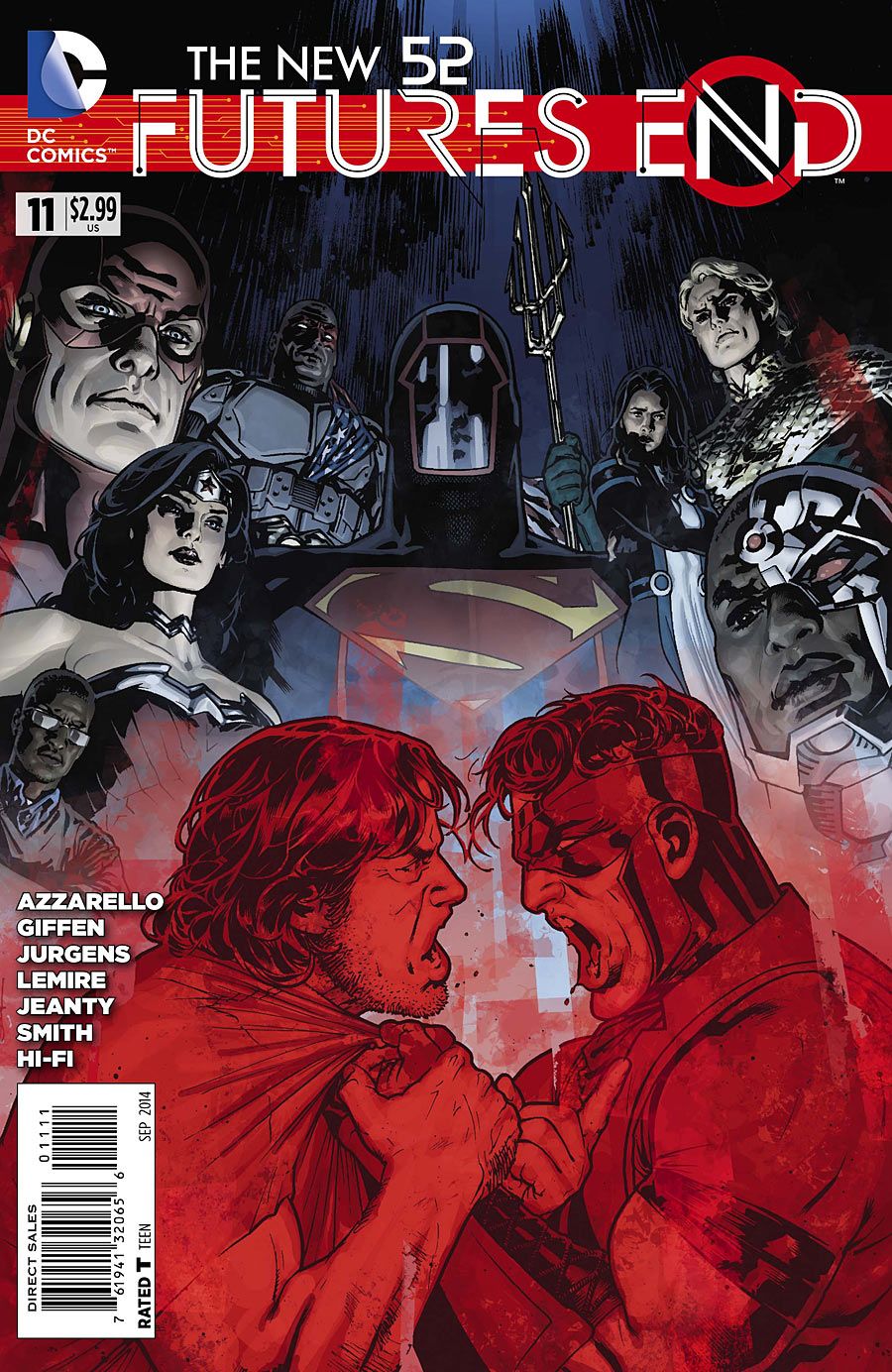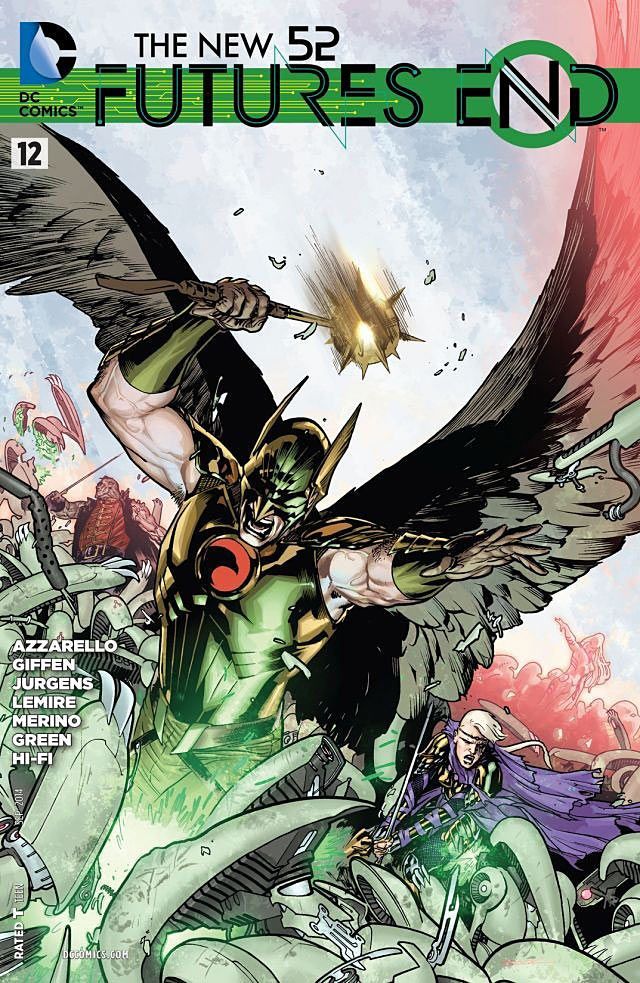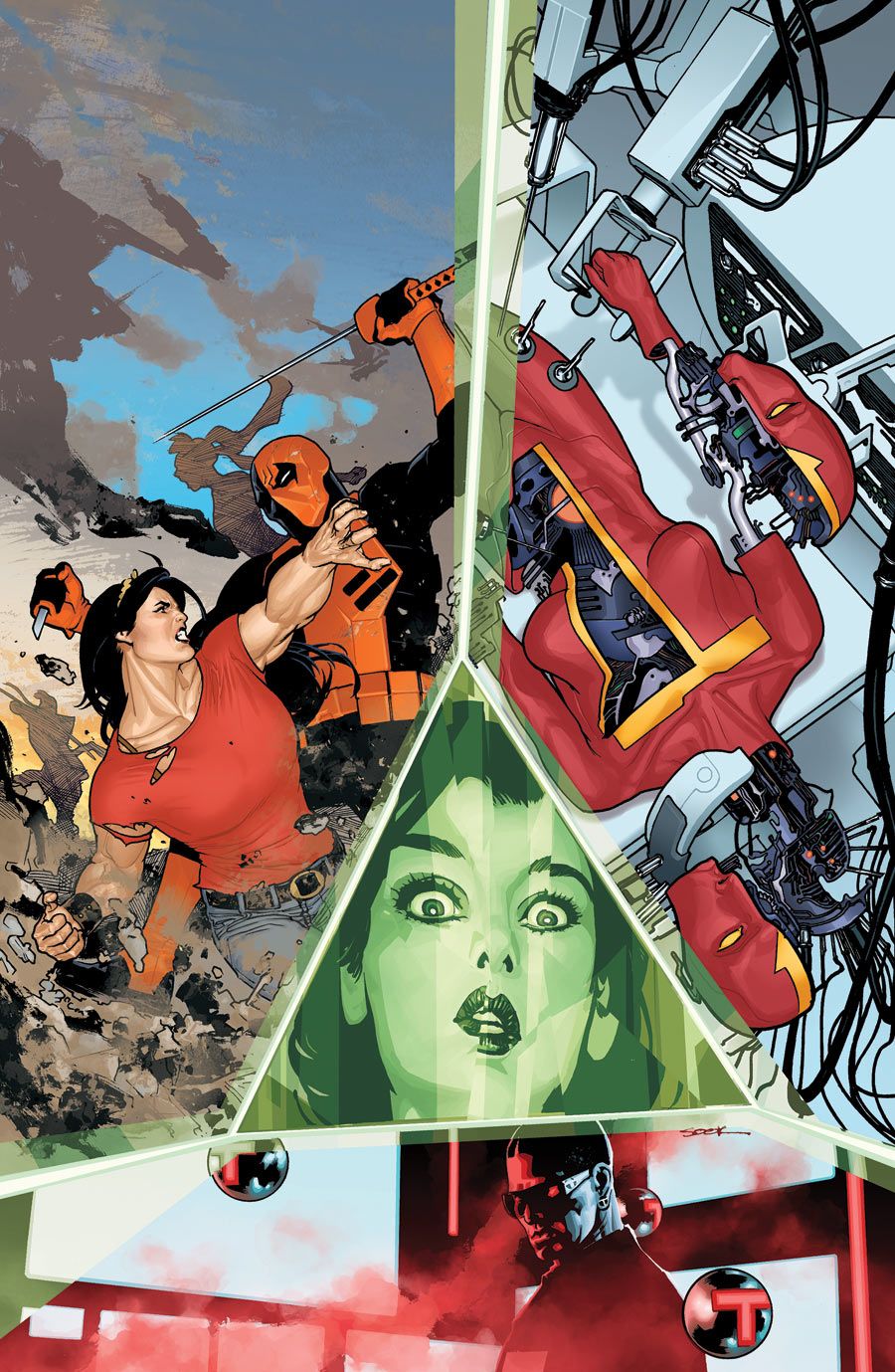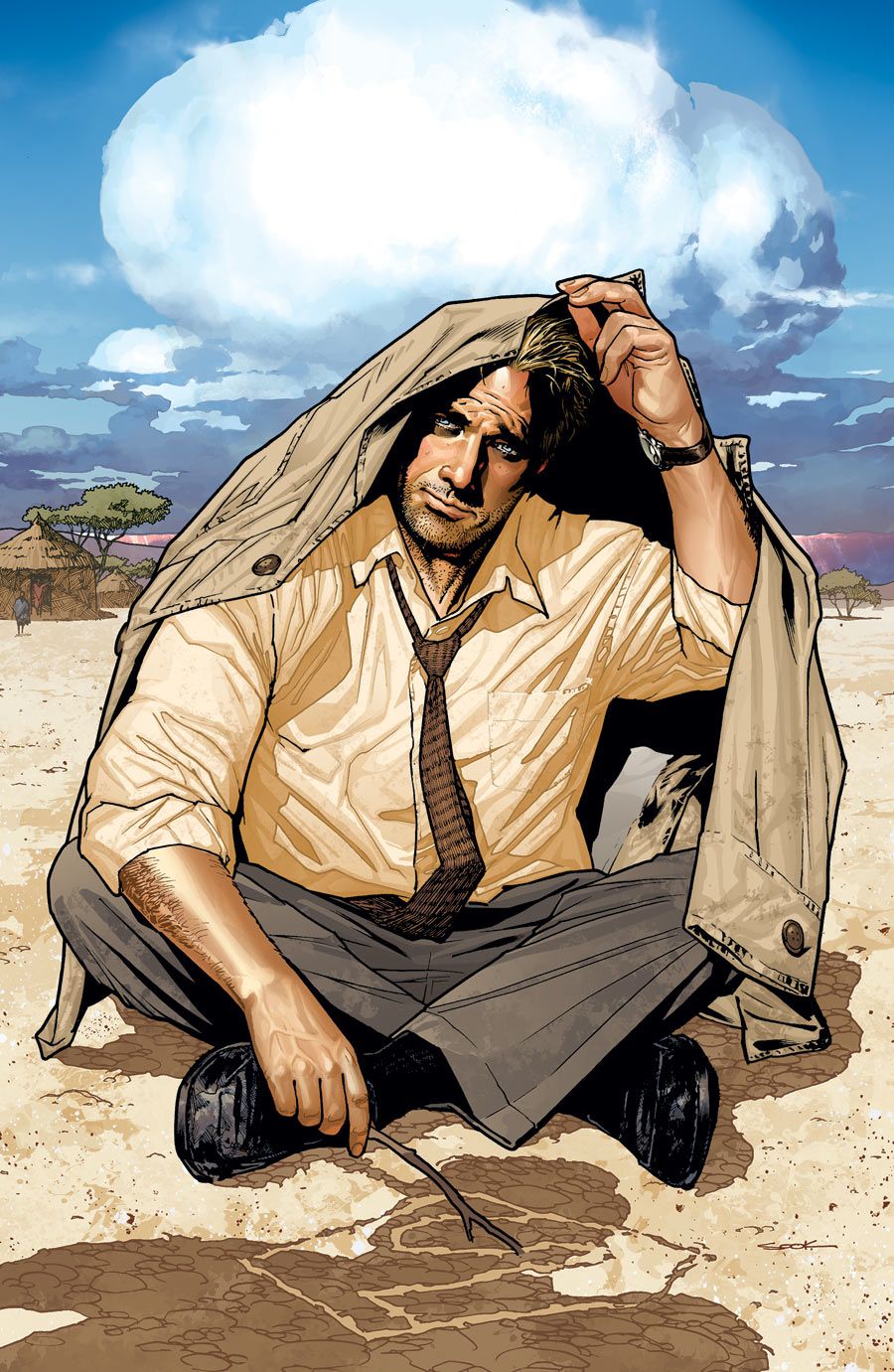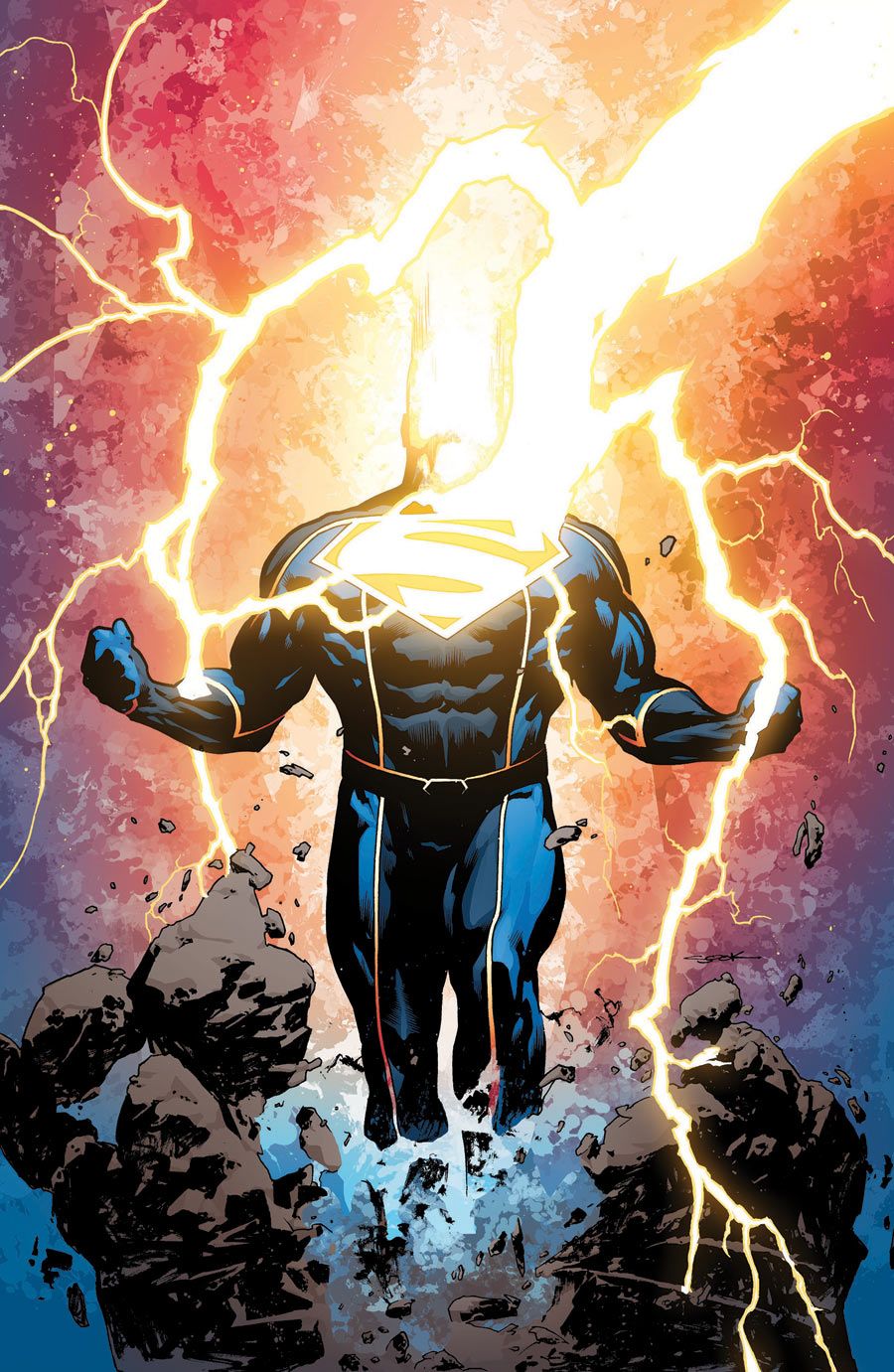If "The New 52: Futures End" was a monthly series, Keith Giffen and Dan Jurgens would be approaching the end of their first year writing the post-apocalyptic epic for DC Comics, but since it's a weekly series, the forward-looking adventure has only just begun. But that doesn't mean the living legends haven't packed a ton of storytelling into the first 10 issues with their co-writers Brian Azzarello and Jeff Lemire and a rotating team of artists including Patrick Zircher, Jesus Merino, Dan Green, Aaron Lopresti, Art Thibert, Scot Eaton and Drew Geraci.
Despite the death and destruction that has been unleashed, the cast of characters continues to grow each and every issue. As Giffen and Jurgens shared with CBR News, the four writers basically take temporary ownership of a featured player or players until someone else needs the superhero (or villain) to organically fulfill a story beat or bridge.
RELATED: Living Legends Giffen & Jurgens on the End of "Futures End" #1
The beauty of this project -- much to the chagrin of the departed -- is a cast primarily void (until this week's issue #11) of icons like Wonder Woman, Aquaman and The Flash, allowing readers to enjoy characters that may be a little less mainstream. How far have we come just five years later -- the era when "Futures End" is set?
Grifter is working for King Faraday (under protest) on Cadmus Island, which is home to a supermax prison holding Earth 2's prisoners of war. Tim Drake, the superhero formerly known as Red Robin, is manning bar at a pub. Frankenstein, Amethyst and a bearded Ray Palmer are in space salvaging what remains of Stormwatch. And the New Gods have just arrived on the scene.
Oh sure, Batman and Superman are still in play too. But the Dark Knight is Terry McGinnis from "Batman Beyond" and Superman may or may not be Clark Kent. No one knows because Superman is wearing a mask, is answering only to Kal-El and kicking butt without asking questions.
CBR News connected with Giffen and Jurgens to discuss "Futures End" and some of the big issues the creators face when telling a story that sets the very existence of the New 52 in absolute peril.
CBR News: We caught a glimpse of Mister Miracle imprisoned on Cadmus Island and it appears Big Barda is a big part of your plans moving forward with "Futures End" as she teams up with Emiko from "Green Arrow." New Gods will also be appearing in a "Green Lantern"-driven crossover this fall. While the New Gods have never truly gone mainstream, the Jack Kirby creations have certainly enjoyed a long history in DC Comics and have a devout fanbase amongst readers and creators. When you drop the New Gods into a DCU storyline, what does it allow in terms of storytelling as these aren't, if I may borrow from the Shoveler, your classic superheroes or even your favorites? These are the other guys.
Keith Giffen: I always use characters that I find interesting. I'm even doing "Infinity Man and the Forever People" with [DC Comics Co-Publisher] Dan DiDio. There's a lot of potential with these characters. I think creative people tend to gravitate toward characters where there is maximum potential. That's the whole kick. I think these are wonderful characters. Whether or not they survive or they can support their own book that remains to be seen but I think when you look at the New Gods, all sorts of stories come to mind. I tend to gravitate toward them.
Dan Jurgens: I'm not working with the New Gods in "Futures End" but I would certainly echo what Keith said. Right now, they're not in my territory. Keith and Jeff [Lemire] have them.
Giffen: And I should point out, when you were created in the 1970s, you're not new anymore. We might need an asterisk. [Laughs] But the moment you attach the word "god" or "gods" to any character, there is a whole different way of approaching the character. It's bigger, it's bolder. And I keep coming back to potential of these characters. If you are going to bring in a character like Orion and he's a god, you can't really treat him like Batman. There's a loftier inference to the character. And you roll with that. If Thor is stopping people robbing a jewelry store, something is really wrong.
In "Futures End," you are telling stories with heroes and villains set in the future of the New 52. Meanwhile, every other creative team, you included, are telling stories set in the present. What has the exchange been like, via editorial and/or direct contact between you and other creators so that you don't set something in motion that they don't want to happen to their characters? Or is the future shown in "Futures End" so far away that is doesn't greatly affect day-to-day happenings in the New 52?
Giffen: I just step on toes. [Laughs]
RELATED: Complete "Futures End" One-Shot Solicitations & Covers for September 2014
Jurgens: [Laughs] Yes, Keith gets one foot and I get the other. Part of it is, yes, what we're doing doesn't necessarily disturb what they're doing in day-to-day continuity. At the same time, one of the realties is that this September, all of the DC books are going to jump five years into the future. Certainly, once we got to that point, a greater level of participation and cooperation was required and I think we've pretty much got that all worked out at this point.
It's been teased in solicitations that the identity of the masked Superman will be revealed. In "Futures End," he's only referred to as Kal-El. When you take Clark Kent out of the equation what kind of Superman are you left with?
Jurgens: A lot of that is going to unfold in "Futures End" #17. At that point, people will know a lot more about the character -- who it is, why they are, whether or not it's Superman himself, whether it's Kal-El and all of that. "Futures End" #17 is a big issue for us in a lot of ways because it starts to delve into that and readers will have a much clearer understanding. Have we left enough bread crumbs? That's for the readers to decide. I think they are going to be pretty happy with what they see and they start to find out about Kal-El.
Giffen: And keep one thing in mind when dealing with the book. Writers are, by nature, liars.
Jurgens: [Laughs]
Giffen: Take that for what it's worth.
Jurgens: The word I keep using to describe Superman as we are seeing him in "Futures End" is that he is much more 'direct.' I want readers to ask, "Why?" We keep talking about the war and what happened in the previous five years and how that might have changed people. Certainly, that is going to be a major part of what Kal-El's story is and where we go through the end of the series. His directness and some of the other qualities we see really start to take center stage in "Futures End" #17. There are a lot of questions that readers might be asking themselves as they read the book about the masked Superman.
While we may or may not have Clark Kent, we haven't seen Bruce Wayne as Batman in the five years later timeline. It's Terry McGinnis from "Batman Beyond." Comparatively, how does Terry as the Batman of "Futures End" change the DCU?
Giffen: Brian Azzarello is the one that brought Terry to the table and pretty much, so far, exclusively has been handling Batman Beyond so you would have to ask him what he thinks.
Jurgens: The one thing that I would throw out there is that all of the characters in the book, Batman Beyond is really the only one with a mission. We're checking in on all of the other characters in the middle of their lives, where with Batman Beyond, from #0 to this point, we have seen someone with a very particular mission in mind. And that's driving a lot of what's happening. That's certainly what makes Terry stand out from everyone else in the book.
I loved the recent story beat that had Ray Palmer lop off a believed-dead Hawkman's arm for Frankenstein, who was in need of a new appendage, as they investigate the demise of Stormwatch along with Amethyst. Turns out he wasn't dead but it's been a rough couple of weeks for Katar Hol because Jeff just killed Hawkman in "Justice League United" too.
Jurgens: That's Jeff who is primarily dealing with Hawkman in "Futures End" too. That is one of those things that emerged very, very early in our story conference.
Giffen: Yeah, Jeff was talking about Nth metal and radiation and the effects that it could have and that grew organically from him.
RELATED: Azzarello & Jurgens on the Creative Alchemy of DC's "Futures End"
It sounds very much like you each have your own characters to write and then issues are spliced into three and four-page snapshots from each of the storylines. Is that the case or is there more overlap in terms of the overall story?
Giffen: For convenience, at this point, yes, there are some characters that we are handling exclusively but that does not mean that they are exclusively ours. If a character that I'm writing suddenly fits in very well with something that Dan or Brian or Jeff is handling then that character is rightfully ceded to the other writer to handle. It's kind of a communal pot. We're all parents but we've got our favorites [Laughs].
Jurgens: I think the clearest example of that is someone like Lois, who for the first couple of issues, Jeff was primarily writing Lois and then Jeff handed her off and I started writing her for a bunch of issues and then we have a very clear point where she goes back to Jeff because she starts to fit in with the story that he's working on. As we go through this and we talk, we say, "When do you need Joe Smith back?" That's how we arrange the handoffs.
When we spoke about the Free Comic Book Day issue and the launch of the weekly series, Keith, you spoke about writing Grifter and exploring a character new to you in terms of creative control. As a creator, admittedly you have your favorites, but it must be liberating to write characters new to you too. Is there a character featured in "Futures End" that has surprised you in that way?
Giffen: It's always fun writing a character that you haven't dealt with before. I never really had a chance to write Grifter before and I certainly never had a chance to write King Faraday before. Once you find something in a character that appeals to you, yes, it's absolutely fun to explore that.
Jurgens: I'm handling some of the Red Robin/Tim Drake stuff right now. I did a one-shot with him back in the Firestorm days and I think that people tend to think of him, at least in the New 52, as a Teen Titans character. With him, we're trying to build him much more as a person. Who is Tim Drake? And what is he really like as an individual? And as we go down that road, he definitely is a character that's surprising me.
"The New 52: Futures End" #11, by Keith Giffen, Dan Jurgens, Brian Azzarello, Jeff Lemire, Georges Jeanty and Andy Smith is on sale now.

